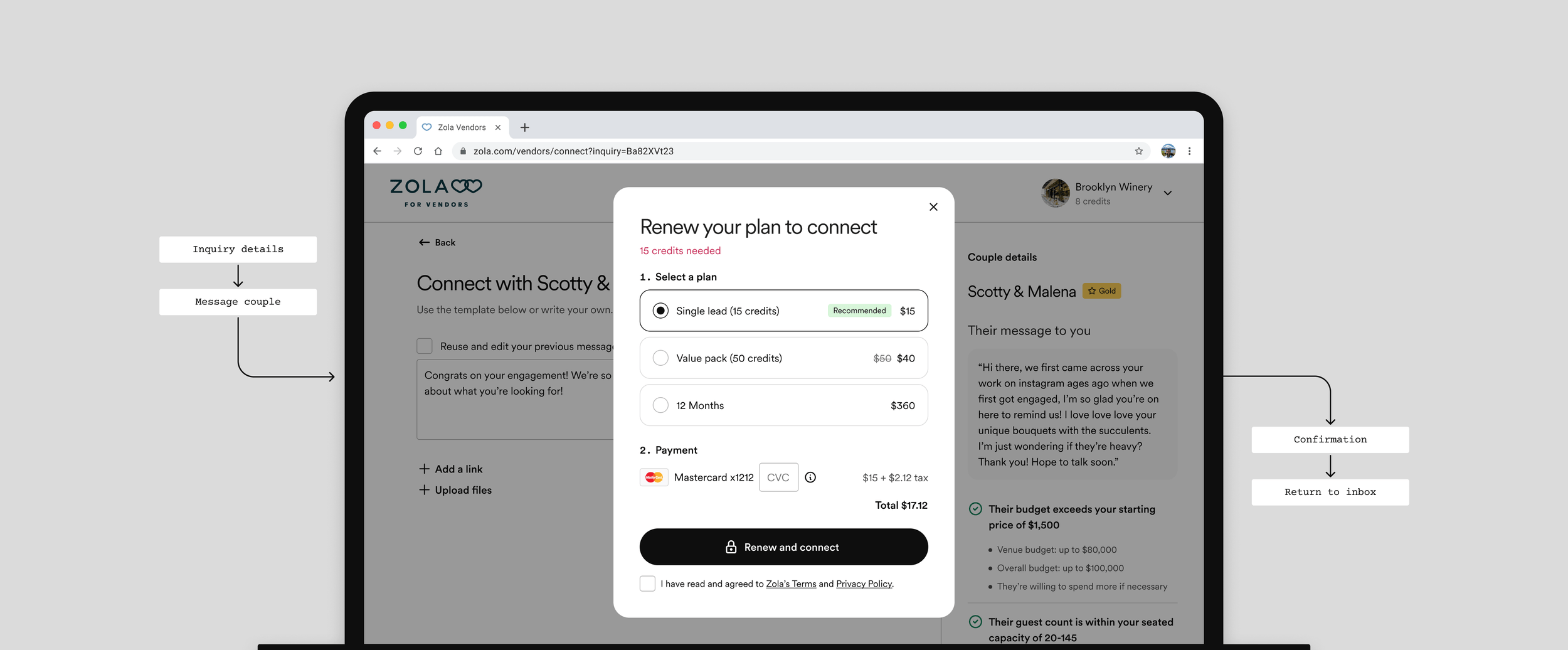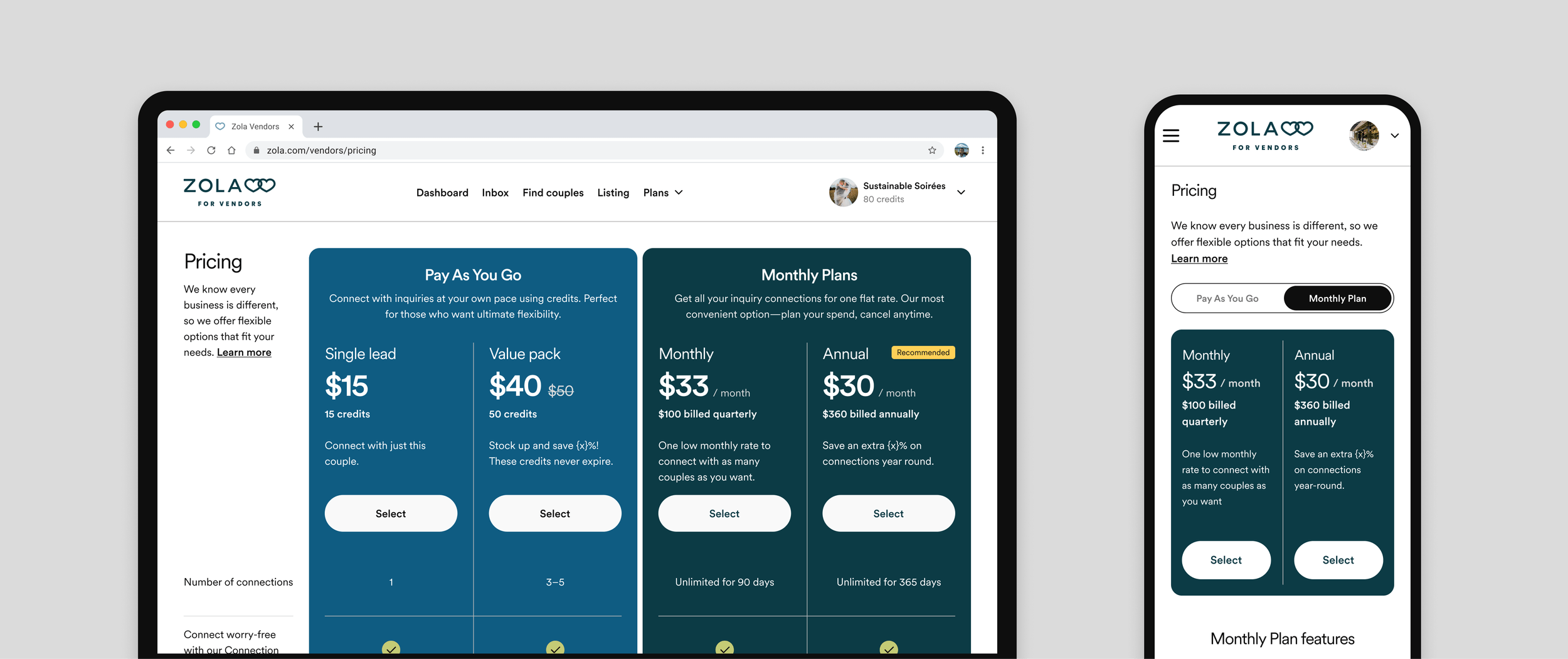Summary
Background and Role
Zola's long term mission is to become the most innovative and trusted company for the entire couple's journey. Having already serviced millions of couples and expanded the business from a wedding registry startup to a full suite of wedding products, Zola is well-positioned to further grow and encompass the largest wedding bucket spend: wedding vendors.
As Senior Director of Product Design on the Vendor Marketplace team, I was “player-coach” shaping strategy, generating designs, and managing 4 direct reports and stakeholder relationships with our CDO/Co-Founder and SVP/GM. I also co-led the Product Design team to evolve culture, design operations, and design system.
Scope and Goal
We tackled this challenge from multiple angles, reshaping the vendor experience from end-to-end. We implemented auto-renewing plans, reduced friction at points of transaction, and introduced a new stream of revenue via ad placements. I partnered with our GM & SVP, one other designer, and a number of members across our 40-person cross-functional team.
The objective for this effort was to increase gross placed sales. Wedding vendors are the biggest spend bucket for couples, and marketplace revenue is mostly margin, so these projects were critical for the business.
Impact
We increased our KPI significantly.
• Monthly Gross Placed Sales (GPS) grew by 4.25x












